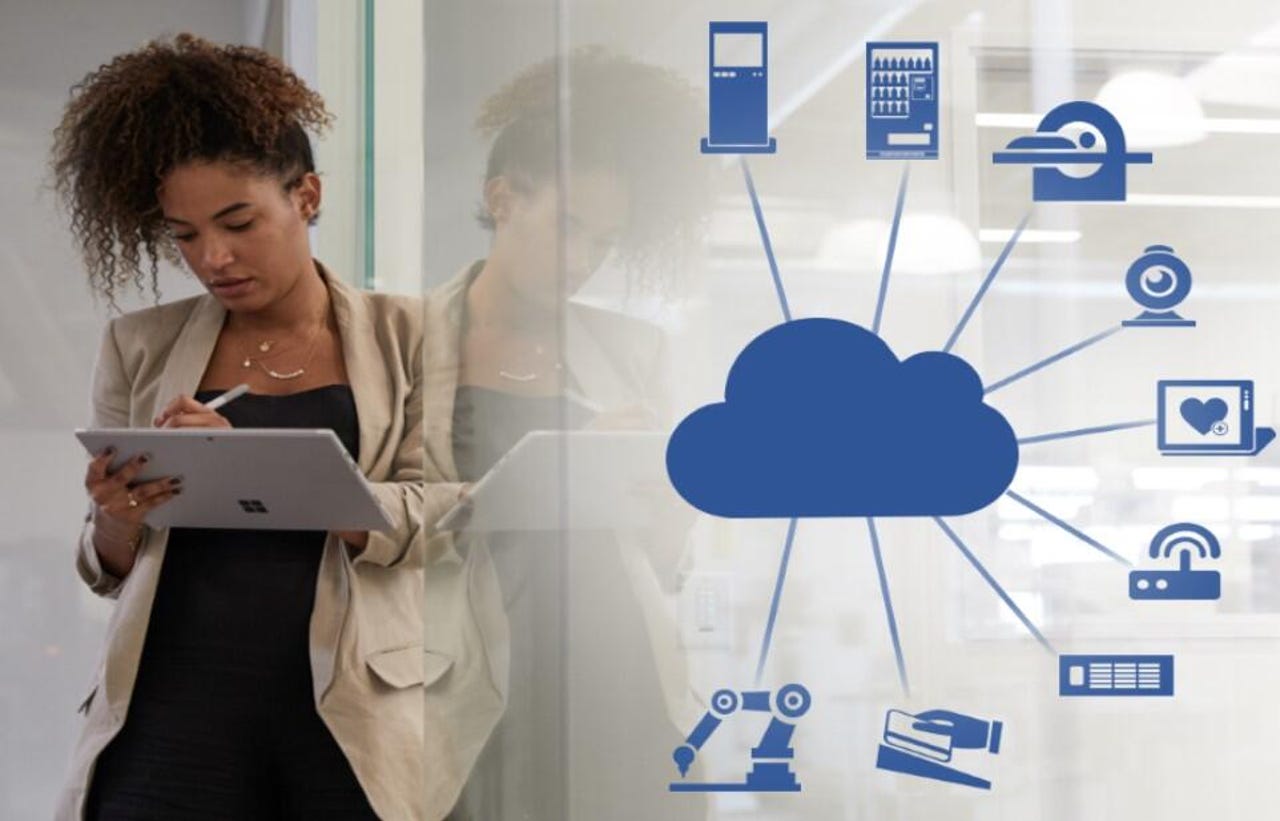
Microsoft Expands Into IoT as Google Withdraws From Market, Contrast in Tech Giants' Strategies | ZDNet

Microsoft Expands Into IoT as Google Withdraws From Market, Contrast in Tech Giants’ Strategies | ZDNet

Credit: Microsoft
Google will be shuttering its IoT Core service ; the company disclosed last week. Its stated reason: Partners can better manage customers’ IoT services and devices. (So much for the idea that IoT workloads are key to growing the cloud business….)
While Microsoft also is relying heavily on partners as part of its IoT and edge-computing strategies, it is continuing to build up its stable of IoT services and more tightly integrate them with Azure. CEO Satya Nadella’s “intelligent cloud/intelligent edge” pitch is morphing into more of an intelligent end-to-end distributed-computing play.
Following a reorg in April this year, which resulted in the Azure IoT engineering and PM teams moving into the Azure Edge + Platform group , Microsoft has been working to consolidate its IoT and edge-computing teams and merge those offerings more seamlessly with Azure. Microsoft officials said at the time that they wanted to integrate IoT/edge with the company’s Azure Arc hybrid-management service; Azure Stack , its family of appliances and hyper-converged infrastructure (HCI) products; and Azure Edge Zones , its 5G-connected cloud services available from edge facilities. By doing so, Microsoft can pitch edge devices as being manageable from Azure across the globe.
Among Microsoft’s current IoT offerings: Azure IoT Hub, a service for connecting, monitoring and managing IoT assets; Azure Digital Twins, which uses “spatial intelligence” to model physical environments; Azure IoT Edge, which brings analytics to edge-computing devices; Azure IoT Central; Windows for IoT, which enables users to build edge solutions using Microsoft tools. On the IoT OS front, Microsoft has Azure RTOS , its real-time IoT platform; Azure Sphere , its Linux-based microcontroller OS platform and services; Windows 11 IoT Enterprise and Windows 10 IoT Core – a legacy IoT OS platform which Microsoft still supports but which hasn’t been updated substantially since 2018 .
(I’m not anywhere near as familiar with what AWS has in the space, but a quick search indicates it has a full suite of IoT services for industrial, commercial and automotive. It also offers FreeRTOS, its IoT Greengrass open-source edge runtime and a dev kit for education-centric IoT devices. Like Microsoft, AI/ML looks to be a key workload here. Unlike Microsoft, AWS also has a substantial home/consumer IoT presence.)
I’ve been asking Microsoft since April this year for an update on the company’s IoT and edge-computing plans and have been told repeatedly that it wasn’t a good time for a briefing.
However, at the company’s Build developers conference in May, Microsoft officials presented a few sessions about the company’s evolving IoT and edge strategies.
A few takeaways:
- Like many cloud companies, Microsoft is aiming to build edge and cloud software and services as if they were one continuous computing fabric .
- Microsoft is looking to support the whole commercial IoT gamut, from “tiny edge” (meaning microcontrollers/sensors/fixed purpose devices); to “light edge” Windows IoT Enterprise, Windows Server IoT and industrial equipment, robots and kiosks; to “heavy edge,” meaning hybrid servers, hyper-converged infrastructure (Azure HCI) and Azure Stack.
- More and more IoT solutions are starting to look like small datacenters, and the boundaries between devices, servers and virtual machines are blurring.
- In addition to better Azure integration, Microsoft is looking to bring cross-service and device security to its IoT offerings (which I’m assuming means Azure Active Directory integration, among other things).
- Cloud-native programming models and Kubernetes/container orchestration are key to its IoT and edge strategies.
Microsoft also played up heavily at Build this year the idea of a “hybrid loop.” The concept: Hybrid apps will be able to allocate resources locally on PCs and in the cloud dynamically. The cloud becomes an additional computing resource for these kinds of applications, and applications – especially AI/ML-enabled ones – can opt to do processing locally on an edge device or in the cloud (or both). This concept definitely relies on IoT and edge devices and services becoming more deeply integrated with Azure.
I’m thinking we’ll hear more about Microsoft’s updated IoT and edge-computing vision at its upcoming Ignite 2022 IT pro conference in mid-October, if not before.
Cloud
What is digital transformation? Everything you need to know
The best cloud providers compared: AWS, Azure, Google Cloud, and more
The top 6 cheap web hosting services: Find an affordable option
What is cloud computing? Here’s everything you need to know
- What is digital transformation? Everything you need to know
- The best cloud providers compared: AWS, Azure, Google Cloud, and more
- The top 6 cheap web hosting services: Find an affordable option
- What is cloud computing? Here’s everything you need to know
Also read:
- [New] Digital Dominion for Techno Gamers for 2024
- [New] Unveiling Your Individual Playlist Paradise on YouTube for 2024
- Cutting Costs without Cutting Edge Experience: My Journey From Expensive Tech - Apple Vision Pro and Meta Quest N to Economical XR Solutions!
- Discover the Power Play: How Apple's Revolutionary Game Mode Could Redefine Mobile Entertainment - Insights Inside!
- Eco-Friendly Cities Redefining Urban Spaces for Nature
- Essential Guide: Why Securing Your Privacy with a VPN Is Crucial for Using Vision Pro and Competing XR Devices - Insights From ZDNet
- Expert Advice: Repair Steps for a Malfunctioning Logitech Scroll Wheel
- Extend Your Day with the Apple Watch's Low Power Feature – A Simple Guide to Optimization by TechExpert | ZDNET
- How Apple's Groundbreaking Gaze Control Is Changing the Game for iPhone & iPad Users with Enhanced Accessibility Options | Insights From ZDNET
- How To Create an Apple Developer Account From Apple iPhone 6
- In 2024, 5 Easy Ways to Transfer Contacts from Apple iPhone 14 Plus to Android | Dr.fone
- Mastering Music with Precision: Discover the Professional Capabilities of Tascam CD-200BT
- Pro's Picks Top 10 Shaky-Free Cameras for Action for 2024
- Quick Guide: Installing Windows 10/11 From a Bootable USB Stick
- Tens of Thousands Benefit From Apple's New Artificial Intelligence Training Initiatives
- The Best iPhone SE Sleeves for Safety & Elegance | GadgetFlow
- Unveiling The Simple Trick To Switching Up Face IDs On Your Apple Watch: A Comprehensive Guide
- Title: Microsoft Expands Into IoT as Google Withdraws From Market, Contrast in Tech Giants' Strategies | ZDNet
- Author: Donald
- Created at : 2025-01-09 20:40:13
- Updated at : 2025-01-12 19:07:56
- Link: https://some-tips.techidaily.com/microsoft-expands-into-iot-as-google-withdraws-from-market-contrast-in-tech-giants-strategies-zdnet/
- License: This work is licensed under CC BY-NC-SA 4.0.